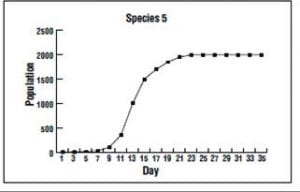This is post 3 of 4 in a series showcasing how Population Education lesson plans can be used to meet the Next Generation Science Standards. This post will feature one middle school lesson plan targeted at meeting a specific NGSS standard. You can read about how Population Education relates to NGS Standards on the series’ intro post.
NGS Standard: Construct an argument supported by evidence for how increases in human population and per-capita consumption of natural resources impact Earth’s systems (MS-ESS3-4).
Showcase Lesson: How Much Space Do We Need?
Curriculum CD: Teaching Population
Grade Level: Middle School
Subjects: Science, Math, Social Studies
Lesson Objectives: In this lesson students will be able to:
- Perform calculations to estimate the amount of space that they require in order to live.
- Compare how their needs for space differ from people in other countries.
- Convert measurements between the US and metric systems.
- Track their consumption of water, energy, and food.
- Define the ecological concept of carrying capacity and how it relates to humans.
It has often been said that the world’s population can fit inside the state of Texas. In fact, if you divide the total area of Texas by seven billion, each person could have their own 35 square foot plot of land. It is clear that – as far as physical space goes – the planet has enough room for a growing population, but do we have enough space to survive given constraints on natural resources? Disciplinary Core Idea MS-ESS3-4 addresses this very question. When a population grows, so does its demand for natural resources. In How Much Space Do We Need? students research and analyze their consumption of resources by calculating their ecological footprint – they must determine the area of land needed to provide for their needs of oxygen, food, energy and water collection. Students should make the important connection that the size of one’s footprint is influenced by the rate at which resources are consumed.
NGSS Extension Activities
Examine the cause and effect relationships of population growth in a class discussion centered on 2012 UN World Population Prospects. Discuss the impacts on natural resources if world population reached 9.6 billion in 2050 as expected.
Have students compare and contrast resource consumption in developed and developing nations. Select two countries and have students calculate footprints for each. Discuss the similarities and differences they observe. Our World of 7 Billion activity, Watch Your Step!, has students calculate and compare their ecological footprint to students in other nations.
Use data from the scenario above to construct a graph. Students can cut out and overlay the two graphs to emphasize the discrepancies between consumption patterns in developed and developing nations.
Research and discuss ways in which carrying capacity can change. You may wish to focus your discussion on technological innovations to address the practice dimension of the National Research Council’s framework.
NGSS Lesson Plan Showcase:
Intro: How to Meet the Next Generation Science Standards with Population Education
Grades K-5: NGSS Lesson Plan for Elementary Grades – Water, Water Everywhere
Grades 9-12: NGSS Lesson Plan for High School – Bye, Bye Birdie




